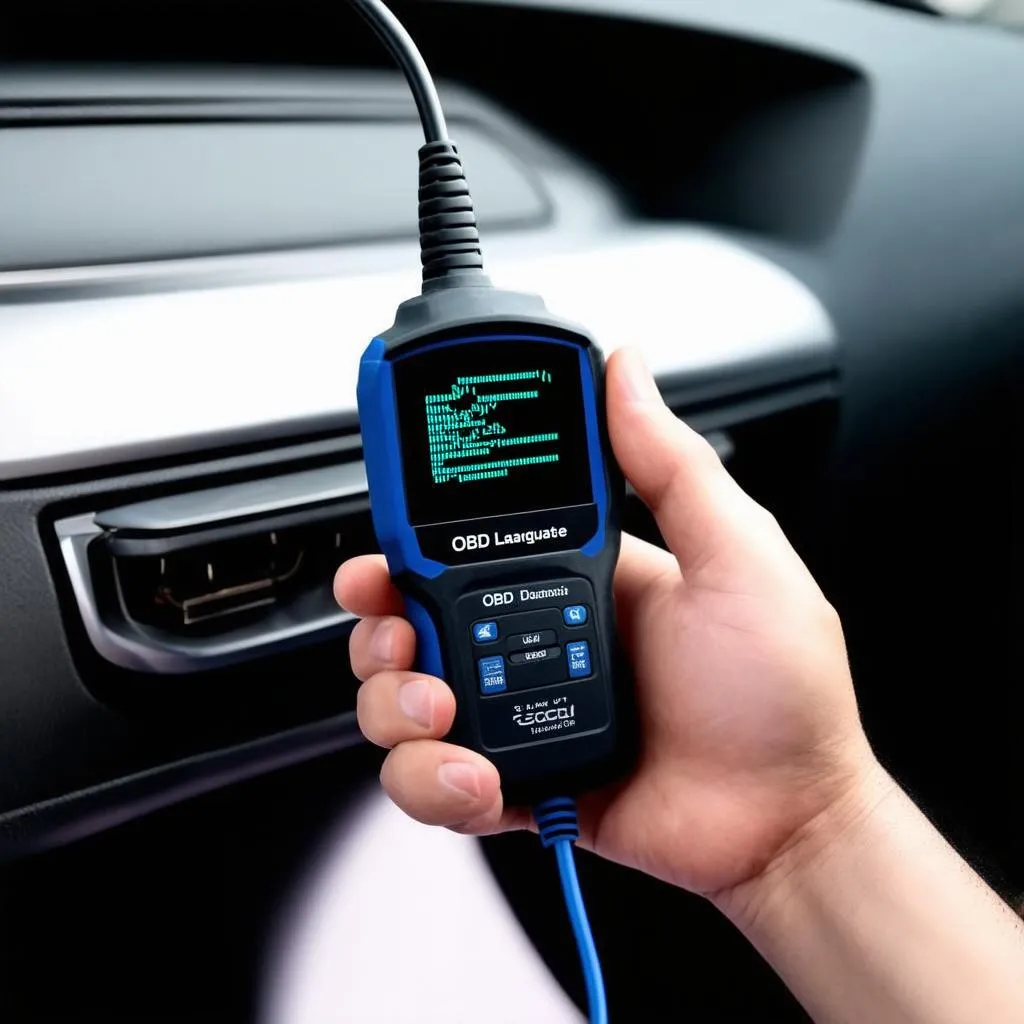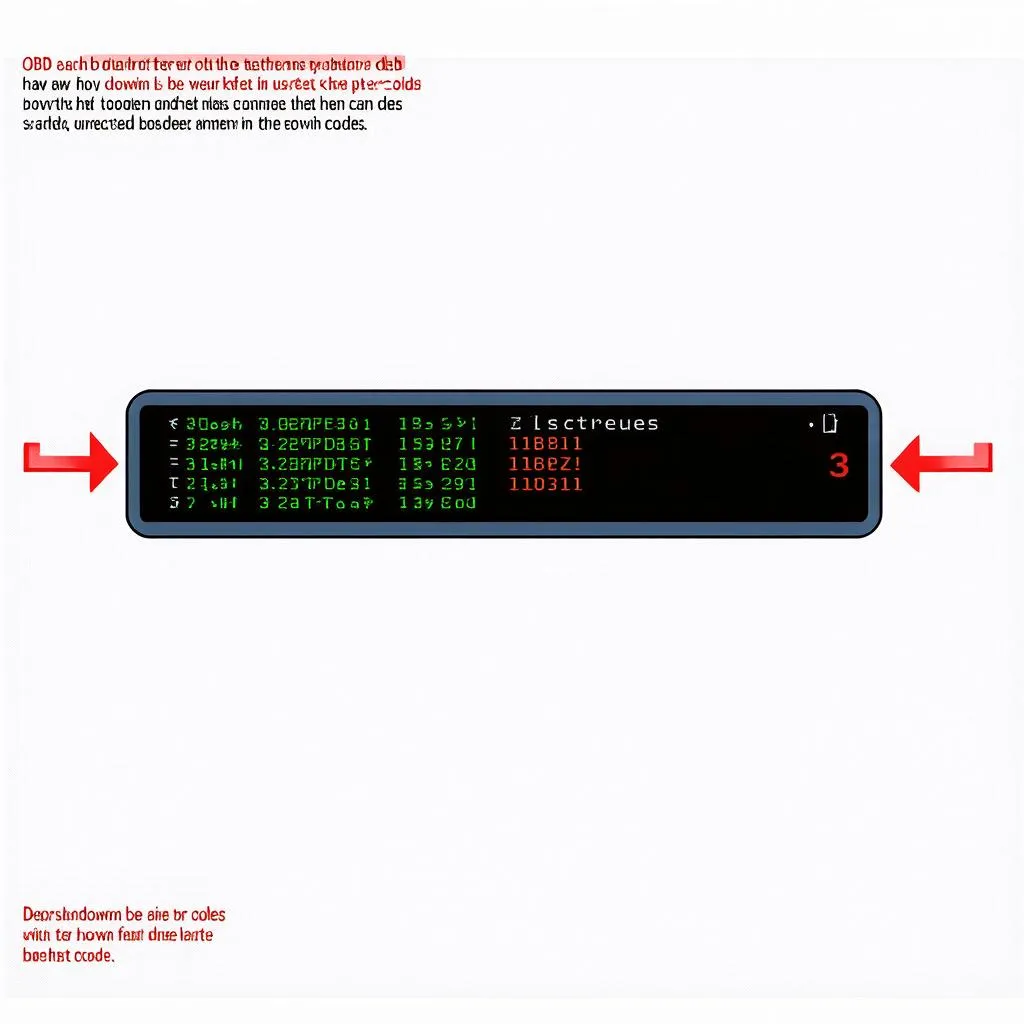Have you ever encountered the dreaded “check engine” light on your dashboard? It’s like a flashing red flag, warning you of something amiss within your car’s intricate system. But what exactly is that issue, and how can you decipher the cryptic message it’s trying to convey? This is where the Obd Symbol, or the OBD code, comes into play.
The Meaning of Obd Symbols: A Peek into Your Car’s Psyche
The OBD system, or On-Board Diagnostics, is like your car’s internal detective. It constantly monitors various components and systems, looking for irregularities or potential issues. When a problem arises, the OBD system generates a diagnostic code, represented by the OBD symbol – a sequence of letters and numbers – that reveals the nature of the problem.
Deciphering the Language of Obd Symbols: A Comprehensive Guide
Think of OBD symbols as a language your car uses to communicate with you. Understanding this language can save you time, money, and stress when dealing with car repairs.
Obd Symbol Categories:
The OBD system categorizes codes into various groups, each representing different aspects of your car’s operation. Here’s a breakdown:
P-Codes: These codes pertain to the Powertrain system, covering aspects like engine performance, emissions, fuel management, and transmission.
B-Codes: Relating to the Body control module, these codes indicate issues with electrical components like lights, doors, windows, and other comfort features.
C-Codes: These codes highlight problems within the Chassis system, encompassing components like brakes, steering, suspension, and airbags.
U-Codes: These codes are used for Unspecified modules or systems that don’t fall into the above categories.
Understanding Obd Symbol Structures:
OBD symbols typically follow a specific structure. For instance, a P-code will start with “P” followed by four digits. The first digit often indicates the general category of the problem (e.g., fuel system, ignition, etc.), while the subsequent digits pinpoint the specific component or issue.
The Mystery of Obd Symbols: A Case Study
Imagine you’re driving your car, enjoying a scenic route, when suddenly, the dreaded “check engine” light flashes on. You pull over and decide to use an OBD scanner to check for codes. To your surprise, you find a P0171 code. Now, what does this code mean?
P0171 code typically indicates a “System Too Lean (Bank 1)” condition. This means the engine is running with a lean air-fuel mixture, which could be due to various factors such as a faulty oxygen sensor, air leak, or fuel pressure issues.
Common Obd Symbols and Their Meanings:
Engine Problems:
- P0300 – Random/Multiple Cylinder Misfire Detected
- P0170 – Fuel Trim Malfunction
- P0420 – Catalyst System Efficiency Below Threshold
Transmission Issues:
- P0700 – Transmission Control System Malfunction
- P0730 – Incorrect Gear Ratio
- P0740 – Torque Converter Clutch Circuit Malfunction
Electrical Problems:
- B1000 – Generic Body Electrical System Fault
- B1213 – Anti-theft System Malfunction
- B1340 – Airbag System Malfunction
The Importance of Obd Symbols:
OBD symbols are like your car’s way of giving you a heads-up about potential problems. By understanding and interpreting these codes, you can:
- Identify the root cause of the problem: This can save you time and money by addressing the issue directly instead of replacing unnecessary parts.
- Prevent costly repairs: By catching problems early, you can avoid major breakdowns and expensive repairs.
- Enhance your car’s performance: By addressing the underlying issues, you can improve your car’s fuel efficiency, power, and overall performance.
Tips for Reading and Using Obd Symbols:
- Invest in a reliable OBD scanner: A good OBD scanner will help you read and understand the codes your car generates.
- Use an OBD code reader app: There are several user-friendly apps available that can help you decipher OBD codes.
- Consult a mechanic for expert advice: When unsure about an OBD symbol or how to address it, consult a trusted mechanic.
- Keep a log of OBD codes: Note down the codes, their occurrences, and any other relevant details. This can help identify patterns and trends.
FAQs:
- Can I clear OBD codes myself? Yes, you can use an OBD scanner to clear the codes. However, it’s important to remember that clearing the codes only removes the warning light, not the underlying problem.
- Why is my “check engine” light on but there are no codes? There might be a temporary fault or an issue that the OBD system is unable to detect.
- How often should I check for OBD codes? It’s a good idea to check for codes periodically, especially if you notice any changes in your car’s performance.
Let’s Talk About Obd Symbols and Feng Shui:
Some believe that the OBD symbol is a reflection of your car’s energy and can even influence its overall health. Just as certain colours or arrangements in Feng Shui can create positive or negative energy flow, the OBD symbols can be interpreted as indicators of the car’s overall state. While this may seem like a mystical connection, it’s fascinating to consider how these technical symbols could be viewed as a representation of the car’s “chi”.
Embrace the Language of Your Car:
Understanding the OBD symbol is an essential skill for any car owner. It’s like unlocking the secret language of your car, allowing you to diagnose problems, improve performance, and potentially save yourself money in the long run.
 obd-scanner-tool
obd-scanner-tool
Need Help with Obd Symbols?
We understand that navigating the world of OBD symbols can be daunting. At TechCarUSA.com, we’re here to help you understand your car’s “language”. Contact us via Whatsapp: +84767531508 for expert assistance with OBD diagnostics, software installation, and any automotive repairs.
Explore Further:
Want to learn more about OBD codes? Explore these related articles on our website:
- BMW E60 OBD Scanner: https://techcarusa.com/bmw-e60-obd-scanner/
- 1997 Lincoln Town Car OBD Port Location: https://techcarusa.com/1997-lincoln-town-car-obd-port-location/
- 2016 HR-V Low Control Module Voltage OBD: https://techcarusa.com/2016-hrv-low-control-module-voltage-obd/
- OBD Live Scanner: https://techcarusa.com/obd-live-scanner/
- Can Your OBD System Throw Codes with No Engine Light? https://techcarusa.com/can-your-obd-system-throw-codes-with-no-engine-light/
 obd-code-interpretation
obd-code-interpretation
Join the Conversation:
Do you have any questions or experiences with OBD symbols? Share your thoughts in the comments below! We’d love to hear from you.